2017 Canfield Riot Factory Build Bike
(discontinued)
| Where To Buy | |||
|---|---|---|---|
Free shipping on orders over $50 (continental U.S. only).
International shipping available. Some exclusions apply. |
|||
Free shipping on orders over $50 (continental U.S. only).
International shipping available. Some exclusions apply. |
|||

Lance and Chris Canfield began their journey as frame builders in the late nineties after feeling their needs weren’t being met by frame options at the time. Since the glory days aboard their 12-inch travel Big Fat Fatty Fat they’ve been coming up with their own interpretation of what mountain bikes should be. In 2011, Canfield Brothers launched their first 29-inch-wheeled bike, the Yelli Screamy, which was among the first wagon-wheeled bikes with sub-17-inch chainstays. Just a few years later, they launched their first dual-suspension wagon wheeler called the Riot, which also featured radically short 16.3-inch chainstays. The Riot features the Canfield Brothers’ patented multi-link design: Canfield Balance Formula (CBF). They have been working with CBF since 2009, which is intended to harmonize the instant center and center of curvature throughout a bike’s travel. They claim this design allows for the most efficient, yet active pedaling platform regardless of braking, sag, travel or drivetrain input. While every brand seems to be future-proofing their bikes, creating new standards, and in some cases reinventing the wheel, the Brothers have held true to what they believe in - high-performing, fun bikes. When they approached us with the opportunity to put the Riot through the wringer, who were we to deny them?
Highlights
- 29-inch wheels
- 140mm travel
- 7005 series aluminum
- Patented Canfield Balance Formula suspension
- 16.3-nch (414mm) chainstays
- 142x12 rear axle
- Tapered headtube
- 15mm pivot bearings
- Anodized and factory raw frame options
- Six link colors available
- S, M, L, XL
- 27.5+ compatible
- MSRP $4549.00USD (as tested)




Canfield Riot Geometry

Suspension Analysis
Using the bike industry's leading linkage analysis software, André Santos, the Youtube suspension whiz, was able to determine a close approximation of the Riot's kinematics for the purpose of this review. These charts provide great insight into several key factors that impact how it rides. Those unfamiliar with these types of graphs should watch André's excellent series of suspension fundamentals videos. The results of his analysis are as follows:




Observations:
- The Riot is a slightly progressive trail bike at 14%, making the travel very usable for the bike’s intended use.
- Pedaling efficiency is great with 100% anti-squat on all rear cogs for a 30T chainring. The bike is very well optimized for 28/30T chainrings. On a 34T chainring, you can expect a 20% drop in anti-squat.
- The amount of chain-growth and pedal kickback are kept within normal values for a trail bike.
- Anti-rise is around 80%, meaning that rear braking won’t significantly affect the geometry (the rear end neither rises nor squats under rear braking).
- Overall, Riot is a slightly progressive trail bike with excellent pedaling efficiency.

Initial Impressions
A handful of years ago 29-inch wheels took their fair share of heckling. These days, just about every manufacturer has at least a few options, many of them leaning towards the more aggressive end of the spectrum. As we got our hands on the Riot for the first time, there were two items that had us intrigued: the radically short chainstays and a linkage noteworthy enough to get a standalone website.
The frame itself is a beauty. Even though carbon frames are all the rage, the raw frame, burly welds, and Canfield Brothers head tube badge make for a beautiful brute. Cable routing is external with the exception of the stealth seat post routing, which meant that setup was a breeze and foreshadows easy maintenance down the line.



At 5’11”, we chose a large frame which is smartly equipped with a 50mm Race Face stem and 800mm-wide handlebars. When the Riot was released, a reach of 457mm was on the long end of the spectrum. However, recently released bikes such as the Santa Cruz Hightower, Trek Slash, and Evil Wreckoning are all within a few millimeters. Prior to the Riot, we had been riding the Hightower and Slash, so we knew we would feel at home straight away and were excited to begin noting the similarities and differences between the Canfield Brothers’ offering and some of the competition.
On The Trail
This year was unique in Squamish in that more of our local trails were under snow longer than usual. In the case of testing the Riot, we actually found this to be an advantage as we were able to ride trails back to back more frequently, often hopping on other bikes for the sake of comparison. There were still plenty of options to let us determine the Riot’s strengths and weaknesses, but having relatively few trail options compared to normal meant we repeated loops numerous times throughout the test. This allowed us to refine setup and suspension settings, in addition to hone in on exactly where and when the Riot shined and where it left a little to be desired. The primary location we used for testing is a maze of 45-second DH tracks and short, technical climbs. Ideal for a bike that claims to be “the most fun full-suspension 29er to ever hit the trail, up or down”. In addition to regular duty in Squamish, we spent time in North Vancouver, Kamloops, the Sunshine Coast, and Coast Gravity Park.

On our first ride, we left the house and got into our usual ‘warm up’ which consists mainly of wheelies, manuals, cutties, and ditch jumping. At times, distinguishing between a millimeter and/or half-degree when reviewing bikes can be challenging, however, in this case, the short rear-center was immediately discernible. For reference, the Riot’s rear end is 21mm shorter than the bike it replaced. Lifting the front wheel is a snap and requires less range of motion compared to a bike with a longer rear end – riders who love back wheel should take note. The bike’s character and intentions were obvious at the outset as if it wasn’t already both on paper and in name.
Prior to our first ascent with the Riot, we speculated whether the compact rear end might be detrimental to the bike’s climbing prowess on steeper terrain. Looking at chainstay length alone, one might be concerned that the Riot may be prone to front wheel lift, but the Canfield Brothers have done an excellent job of putting riders in a suitable position by balancing the very short rear end with roomy reach numbers and reasonable wheelbase. The effective seat tube angle is also plenty steep, which puts riders right in the sweet spot, and we didn’t need to adjust our body position or location on the saddle to compensate for the short chainstays. In moments where a wheelie was advantageous, for example around a tight uphill switchback or up ledges, the easy-to-lift front end came in handy. As intended, the CBF suspension remains active while climbing. In addition to remaining supple, the Riot’s suspension feels consistent regardless of whether we were seated or standing. The active rear end and thoughtful geometry provided excellent seated and climbing traction. We occasionally used the shock’s pedaling platform on road climbs but left it wide open for the majority of rides. Compared to an ENVE equipped Santa Cruz Hightower, the Riot doesn’t climb with the same speed (note: the Hightower was nearly five pounds lighter), but it is comfortable in the sense that it climbs technical terrain easily with limited pedal feedback, active suspension, solid geometry, and heaps of traction.

We expect that any bike we receive from the Canfield Brothers is going to excel when pointed downhill. The Riot is no exception to this rule. To begin with, the geometry of the Riot puts the rider in a confident position for descending. The saddle tucks out of the way nicely due to the actual (vs. effective) angle of the seat tube, the head tube angle is reasonably slack, and there are no geometry outliers with the exception of the intended one: short chainstays. We found the short rear end was advantageous in some scenarios and a disadvantage in others. In the case of the Riot, bike park speeds and successive holes were at times challenging to manage compared to bikes with longer rear ends. That said, we only experienced this on blown-out DH tracks, not our usual backyard loops. The Canfield Brothers were no doubt aware of this compromise, and so they instead focused on creating a very nimble trail bike.
Considering the travel and wheel size of the Riot, the rear end is almost shockingly snappy. Tight corners and cutties are a breeze – the roomy reach allows for an assertive riding position while the short chainstays allow the rear wheel to flick around corners in an instant. Similar to the tails of a reverse camber ski, the Riot’s rear wheel almost feels as though it can pivot around corners, rather than taking a longer arc.
Considering the travel and wheel size of the Riot, the rear end is almost shockingly snappy.
The compact hind quarters also meant that manuals and power wheelies became a more regular occurrence. In general, the Riot’s geometry seems to encourage riders to have as much fun as possible, rather than plowing from start to finish with only the stopwatch in mind. The multi-link CBF added to the Riot’s potential. As the Canfield Brothers intended, the suspension remained consistent regardless of terrain, braking, sag, or rider input. This dependable feel meant that we knew what to expect from the suspension in just about every situation. The DVO Topaz also allowed us to tinker with settings easily in order to get the most from the Riot. We settled on a fairly progressive setup and around 25% sag, which permitted plenty of traction in the initial stroke, yet end-stroke remained firm to save our tails when hijinx went sideways (often literally).


What really resonated with us throughout the test is the character of the Riot. Simply put, the bike is a blast to ride. According to Chris Canfield, that’s exactly the intent of the bike. “After years of running hardtails with the 414mm chainstay lengths, it only seemed natural that the 140mm travel Riot had the same playful handling. I think it feels more like a 4x bike than a 29-inch bike.” We have to agree, and while it isn’t the fastest, lightest, or flashiest, we spent the majority of the time smiling, sideways, on the back wheel, easily swapping lines, and blindly jibbing aboard the Riot. We even had regular riding partners commenting on how much we seemed to be playing about. The bike encouraged tomfoolery and every time the geometry and suspension saved our skin, it inspired additional poor behavior. Also of note is how well the Riot performs with flat pedals. With some suspension designs, pedal feedback and suspension inconsistencies can be a challenge. Aboard the Riot, the combination of smart angles and consistent Canfield Balance Formula suspension meant that we spent less time dropping our heels to keep our feet planted and more time looking for our next trailside huck or corner to slap.
Build Kit
In an effort to bring Canfield Brothers to the masses, the guys have decided to offer bikes directly to consumers. Our test bike came equipped with DVO suspension front and rear, plus the sensibly chosen Factory Build. The build includes Race Face components, Maxxis rubber, a Shimano XT drivetrain, and in-house cranks and wheels. The Brothers have done a solid job of putting together a mixture of high-performance where it counts, and reliability where needed. Our bike weighed 32.82 pounds with a ghetto tubeless setup. At $4,549 USD our Riot was reasonably priced and sensibly built, especially for a smaller brand. Canfield Brothers also offer a handful of different suspension choices to suit any rider’s preferences, plus a frame only option.

The DVO suspension featured on our bike worked flawlessly throughout the test. Both the fork and shock were straightforward in terms of tuning. In the case of the Diamond, the Off-The-Top adjustment is a great tuning addition and we easily found a sweet spot between small bump compliance and too much dive. The Topaz T3 Air shock also featured the standard tuning options such as three compression settings (climb, traverse, descend), rebound, air volume, plus the option to modify spring rate further using the bladder. In both cases, we found our preferred settings were firmer than suggested, which is consistent with our experience aboard other brands.
As mentioned, the Canfield Brothers’ factory build includes a handful of in-house components. On the drivetrain side, their aluminum crankset and GXP bottom bracket silently did their job throughout the test. Our 170mm crankset weighs 742g, which is a tad heavier than SRAM’s X1-1400 crankset, a setup featured on many similarly equipped rigs. Canfield Brothers have made a couple of thoughtful modifications to their crankarms: first, they added a small rib in order to reduce any scuffing from shoes, and second, they offer lengths between 155 and 170 millimeters. Not only are the shorter cranks beneficial for smaller folks, but taller riders can benefit too as some studies have shown improved oxygen uptake, power output, and aerodynamics using shorter cranks (note: most studies are specific to road cycling). The clearance of shorter cranks over technical trails is another benefit to consider. The Brothers’ wheelset was pretty much all business. The alloy rims held up to plenty of abuse, the simple 3-pawl hub didn’t need any attention, and the spokes retained their tension. They’re a little bit on the narrow side at 23mm internal and a little portly at 2020 grams per set, however, they were maintenance free, which we can’t argue with. As expected, the Shimano XT stoppers and drivetrain were faultless. The Race Face components were also without issue, although the Turbine dropper post can be a little finicky if air pressure or cable tension are off. The Maxxis Minion DHF tires rounded things out nicely.
The crew at Canfield Brothers gets it. 800mm handlebars, 150mm seat post, reliable drivetrain, and high-performance suspension.

The crew at Canfield Brothers gets it. 800mm handlebars, 150mm seat post, reliable drivetrain, and high-performance suspension. Consumers shouldn’t need to change a single part of the Factory Build unless they’re shaving grams.
Things That Could Be Improved
We had a blast aboard the Riot, but there were also a few troubling moments. The Riot’s linkage provided us with a challenge when it came time to put things back together after frame inspection. The reason for this is the pivot bolts press-fit the frame together and any torque inconsistencies resulted in disconcerting frame flex. It isn’t an issue when using a digital torque wrench, just don’t forget to set it perfectly.
We aren’t weight-weenies, but nearly 33 pounds is pretty heavy for a trail bike these days. Our preferred tire casings are Super Gravity or Double Down, which would have pushed the numbers to near DH bike levels. We feel that if Canfield Brothers could retain the value of the Factory Build, but save some weight, the bike’s riotous character would shine through even more.

Long Term Durability
Even with a perfectly setup frame, the Riot has more lateral flex than we are used to. It isn’t something that we found distracting while we were riding, however, we noted that there was more movement than we would have liked to see. Our concern is that the flex might reduce the longevity of the shock, surrounding hardware, and even parts of the rear end. The guys at Canfield Brothers have been riding their Riots for much longer than we have, and they’re confident that the parts are no more susceptible than on any other bike.
We threw everything we had at the Riot. Other than the upper link pivot bolts coming loose from time-to-time, there were no quibbles from the frame and nothing beyond routine maintenance. From a brand like Canfield Brothers, we expect that the bike and build should take a beating. In our case, they absolutely did.
The Riot is aptly named. The Canfield Brothers have produced a winning combination of stability and maneuverability in a reasonably priced package.

What's The Bottom Line?
The Riot is aptly named. The Canfield Brothers have produced a winning combination of stability and maneuverability in a reasonably priced package. It doesn’t climb as quickly as some of the competition, but you can nearly have two Riots for the price of one plastic competitor and still get to the top comfortably. It doesn’t mute the trail like a purebred race bike, but is nearly as capable descending and may actually be quicker on tighter trails. Riders who give the Canfield Brothers Riot a flogging can expect to have just as much and maybe more fun than their buddies aboard the latest fantastic plastic, not to mention retain a few thousand dollars for a road trip homage to the Canfield Brothers: begin with the Mushroom Drop in Utah, work through Colorado, and wrap it up in Bellingham. Maybe we can tag along?
For more information, visit www.canfieldbrothers.com
Vital MTB Rating
Climbing: 3.5 stars
Descending: 4.0 stars
Fun Factor: 5.0 stars
Value: 4.5 stars
Overall Impression: 4.0 stars - Excellent
About The Reviewer
Joel Harwood has been playing in the Coast Mountains of British Columbia for the last 11 years. If he isn’t coaching gravity racers he can be found tinkering in the garage or messing about at the pump track. He dabbles in all types of racing but is happiest simply exploring the limitless trail networks of the Pacific Northwest. Attention to detail, time in the saddle, and an aggressive riding style make Joel a rider that demands the most from his products.
Photos by Jessie McAuley (action) and Joel Harwood
Specifications
Please see the Canfield Brothers webstore for more info.
| Where To Buy | |||
|---|---|---|---|
Free shipping on orders over $50 (continental U.S. only).
International shipping available. Some exclusions apply. |
|||
Free shipping on orders over $50 (continental U.S. only).
International shipping available. Some exclusions apply. |
|||










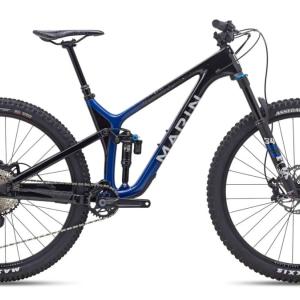
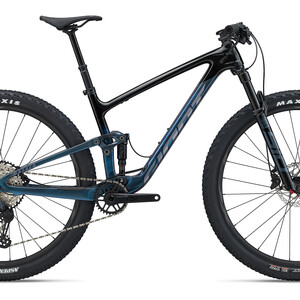

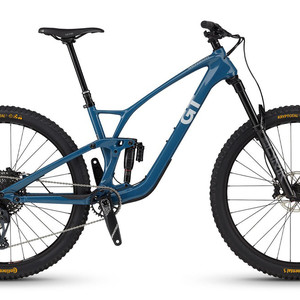

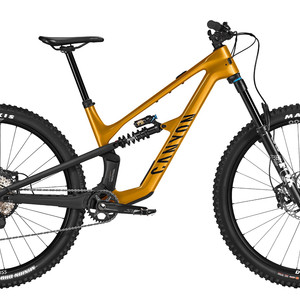

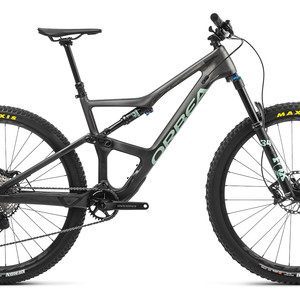







6 comments
Post a reply to: Tested: 2017 Canfield Brothers Riot Factory Build